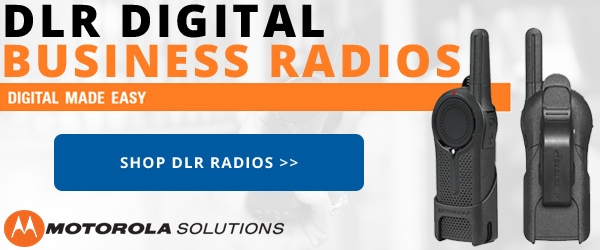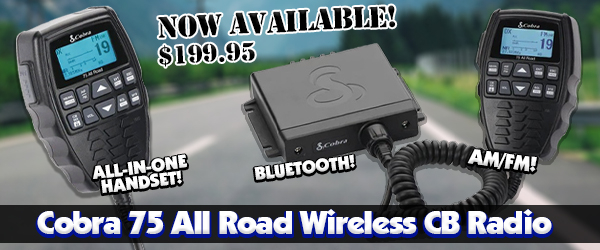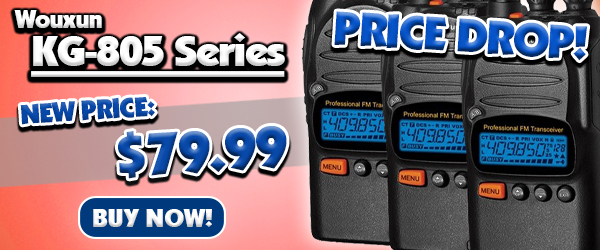There are scenarios in which two way communications are necessary or even critical, but the prospect of equipping everyone with a handheld two way radio is not affordable, feasible or even practical. In such a situation, the logical solution may be to use a wireless base station, intercom or callbox.
You may already be familiar with the classic wired intercom system used in some businesses and homes. Essentially, it consists of a box with both a speaker and microphone that communicates with another intercom box in another room or location. These devices are usually mounted on a desk or wall and hardwired throughout the interior of an office building or home.
Today it is not uncommon to find wireless intercoms substituted for many of the traditional wired devices. A wireless intercom is actually a two way radio that, like the older, traditional intercom, is typically mounted in a fixed location. The intercom is programmed to communicate with other intercoms and two way radios within or around the facility. Wireless intercoms provide more flexibility than the old wired systems because they can be installed easily in existing locations without the added cost of actually wiring a building and can interact with a variety of other radios, including handheld portables.
A callbox is essentially the same type of device as an intercom, only a bit more rugged. While both types of devices operate the same way, the intercom is typically a lighter duty call box used primarily indoors between rooms or offices, while the callbox usually refers to a heavy duty unit designed to be more secure and weatherproof for indoor/outdoor use.
A callbox typically consists of a box mounted on a post or wall, with a front speaker, mic and call button or keypad. They are used for a variety of applications and are often found at or near gated entrances, warehouse delivery doors and loading docks, fast food ordering stations and drive-thrus, golf courses, roadside assistance stations, parking lots, resorts, hospitals, college campuses, airports and other public locations.
Ritron is a leading manufacturer of wireless callboxes and intercoms. The company offers a full line of fixed mount communication devices using two way radio technology. Based in Carmel, Indiana, Ritron is somewhat unique in the respect that their products are made in the United States.
Ritron's intercoms are designed with convenience and security in mind. The Ritron JobCom® Display Series Wireless Intercom/Base Station (JBS) is a wireless, 10 channel intercom designed for stationary use in a specific area, such as a reception desk or in a shop. It can be mounted to a wall for secure operation or sit on a desk for convenient access.
The Ritron JBS Series intercoms are also designed for both interactivity and interoperability. They feature 21 business-only, pre-programmed, user selectable UHF or VHF frequencies with 2 Watts of power. The JBS -446D operates on UHF frequencies. The JBS-146D operates on VHF frequencies (including MURS) and can be programmed to receive NOAA weather channels and weather alerts. Both models also feature a large, 1 Watt speaker with loud, clear audio output, 51 privacy codes, Channel Scan, Call Tone, 2-Tone Paging Decode, DTMF ANI Encode, Programmable Soft Key and an easy to read LED display. Both models operates on 110VAC or 12VDC (with optional adapter) and are packaged in a steel enclosure for added durability.
As for callboxes, that is one of their specialties. Ritron manufactures several series of callboxes, called the OUTPOST® Series, designed for specific uses.
The Ritron OUTPOST® Series Callbox consists of a UHF or VHF two way radio transceiver that can be programmed for long range communication with virtually any other brand two way radio. According to Ritron, these callboxes offer up to five times the range of other wireless systems and are repeater capable to extend the range of the callbox.
The Ritron RQX-451 supports 77 UHF frequencies and the RQX-151 supports 27 VHF frequencies including MURS. All models are field or PC programmable and are wide or narrow band frequency compatible. The callboxes can be powered by 6 D cell batteries for a 100% wireless installation or wired for optional external AC power. Other standard features include an External Power Fail Alert, Low Battery Alert, Call Tone and Adjustable Speaker Volume.
The OUTPOST® 1 Series Callbox comes in two versions: the Basic and the XT. The Basic version is intended for use indoors in controlled environments such as inside a warehouse, manufacturing plant, remote area of a large building or in other interior locations where simplex radio communication is needed. The XT version is designed specifically for use outdoors in an all-weather environment. It is enclosed in a fiberglass housing with a stainless steel faceplate attached to the front of the housing with tamper-resistant fasteners. The XT is ideal for use around facilities such as golf courses, construction sites, gated entrances, outside large buildings or other exterior, fixed locations.
Intercoms and callboxes are a well-established form of fixed, two way communications. However, although traditional wired devices still have their uses, wireless radio intercoms and callboxes add a dimension of flexibility and interoperability to the mix, as they can also provide safe and secure communication to mobile, handheld or stationary base station radios as well as other fixed stations - without the costly installation of a wired system.
For an in-depth discussion about intercoms and callboxes, listen to The Two Way Radio Show Episode 23 - Callboxes and Intercoms.
View this video introduction to the Ritron OUTPOST® 1 Series Callbox!

















